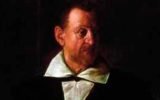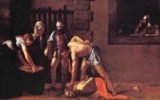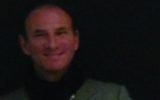Portraits and Portrayals
by John VARRIANO
Portraiture is perhaps the most natural challenge to the realist painter. Alone of the genres, it combines spirit with substance and focuses directly on living individuals. It would seem particularly natural that Caravaggio be moved to paint portraits since he was instinctively drawn to the human figure and the expressive psychology of the mind. Portraiture, moreover, was renowned among his predecessors and contemporaries in Lombardy and Rome. Painters in the north like Moroni, Lotto, and Cavagna, or Romans like Pulzone or Ottavio Leoni had fashioned highly realistic likenesses that Caravaggio could hardly have failed to notice. His principal patrons in Rome were enthusiastic collectors of portraits and their palaces were full of such pictures. Indeed, more than half of the 600 paintings in the Del Monte Collection were portraits.








